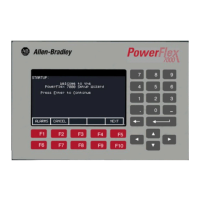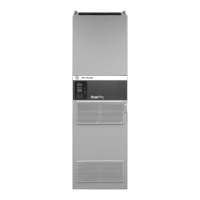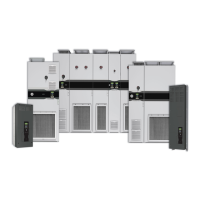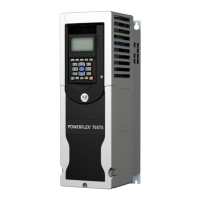Rockwell Automation Publication 7000-UM202D-EN-P - May 2018 91
Power Component Definition and Maintenance Chapter 2
8. Loosen the tie wrap holding the gate-cathode wire in place, and remove
the device from the assembly.
9. Install the new device in the same position and using the same
orientation as the original SCR, and firmly secure the gate-cathode wires
with the same tie wrap.
10. Connect the gate-cathode connector to the gate driver board.
11. Apply a thin layer of electrical joint compound (Alcoa EJC No.2 or
approved equivalent) to the contact faces of the new SCRs. The
recommended procedure is to apply the compound to the pole faces
using a small brush and then gently wiping the pole face with an
industrial wipe so that a thin film remains. Examine the pole face before
proceeding to ensure that no brush bristles remain.
12. While grounded, use a long Phillips screwdriver to remove the two
screws that hold the SCR SPGDB to the metal bracket on the red glastic
assembly. Retain the hardware.
13. Pull the four plastic clips that secure the SCR SPGDB to the glastic
assembly. Retain the hardware.
14. Install the new SCR SPGDB in the assembly with the 4 plastic clips and
use the screws to secure the board to the metal bracket.
15. Clean the heatsink with a soft cloth and rubbing alcohol.
16. Slide the SCR and SPGDB back into place until the mounting bracket
makes contact with the heatsink. Use the Phillips screwdriver to tighten
the assembly to the heatsink.
17. Reapply the clamping load as described in Uniform Clamping Pressure
on page 92.
18. Connect the control power cable and the fiber optic cables, ensuring
that you do not exceed the bend radius.
IMPORTANT Too much joint compound may result in contamination of other surfaces
leading to system damage.













